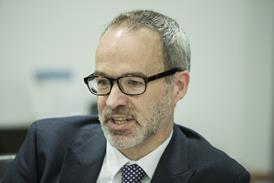Exclusive: Trust bailouts rise to £2.7bn as more rely on loans

NHS trusts were forced to draw down £2.7bn of emergency cash bailouts from the government last year – with two-thirds of hospital providers now relying on government loans to maintain payments to staff and suppliers.
You need to be a subscriber to read more

Subscribe for unlimited access
With a HSJ subscription you’ll unlock:
- All HSJ news by sector, topic & region
- Breaking News announcements
- App for mobile and offline reading
- Comment and Daily Insights newsletters
- Regional roundup newsletters
- Unrestricted access to ‘Ask HSJ’ - AI assistant - AI assistant
- 10 expert briefings every fortnight (Premium only)
Already a subscriber? Sign into your account here




















